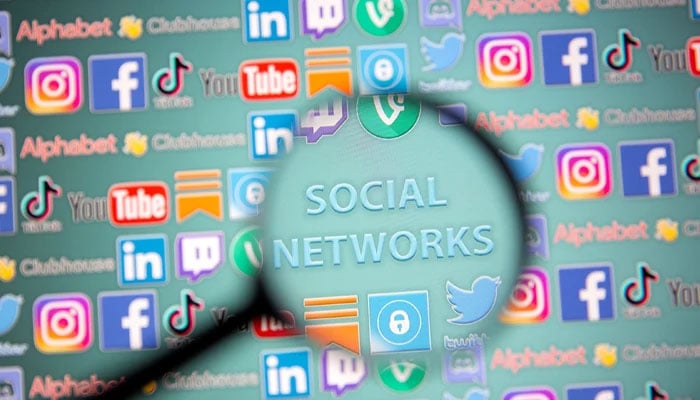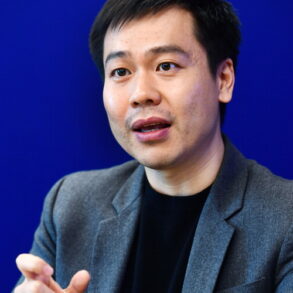Do we need guardrails to protect our people, especially the youth, from the polarizing and soul-destroying impact of social media?
To answer this, we need to see how social media and technology is changing the political and social landscape, especially its impact on the young. We also need to have a look at advanced, industrialized democracies like the US where cutting-edge technologies are shaping the way the new generation thinks and interacts.
Social media has led to quite a few problems in the US. Fareed Zakaria makes a persuasive case in his new book ‘Age of Revolutions’ about the perils of technological change that are leaving societies dazed and rudderless. It argues that when confronted with the astounding speed of the technological change and the fear of losing their identity in a sea of change brought in by inorganic artificial intelligence, people go back to their default settings of ethno-racial identities.
In simple words, people are now finding refuge in their tribal, racial and ethnic identities, regressing into tribalism.
Tribalism lets people’s instincts of hatred and dominance thrive, leading to an us vs them situation. In the US, populist leaders like Trump use fear as a weapon to lure their followers into their stockade of political tribalism through fear of migrants, inclusivity and globalization. As a result, the idea of globalization is withering away right in front of our eyes while populism is on the rise.
According to author Yuval Noah Harari, humans are “creating artificial intelligence without beating the natural stupidity.” He also says that what took microorganisms like amoeba a billion years to evolve into dinosaurs, artificial intelligence would take just 10 years.
Are humans ready for such surprising changes caused by a super intelligent yet insentient entity that has no emotions and that feels no fear, anger or remorse?
When such an entity takes over, it will also dominate the way humans interact and their thinking patterns. According to American writer Jonathan Haidt, social media and communication technologies have rewired the brains of Gen Z. It was the generation – born in 1995 and started graduating from universities in 2014 – that found real-life challenges too hard to face. Gen Z suffered from ‘fragilization’ induced by the changes in social media technology.
The fragilization meant that the new generation was not resilient enough to combat the challenges of the workplace and the real world, as parents had kept them overprotected in the real world but underprotected in the virtual world.
The problem, as per communication and technology scholars, started with the introduction of the ‘Like’ button by Facebook in 2009 and the ‘Retweet’ button by Twitter (now X). These features increased the virality of shared content and made the young generation overly conscious of the reactions on social media.
Between 2009 and 2012, besides Gen Z other institutions also got adversely impacted by social media. The young impressionable minds got so much affected by likes and dislikes that mental illnesses and self-harm incidences reached alarming proportions.
Technology Ethicist Tristan Harris’s ‘The Social Dilemma’ shows how social media started impacting society, wherein parents had no option but to allow their kids to use social media, since everyone else was using it.
Data from studies in US and UK hospitals quoted by American author Jonathan Haidt shows that self-harm and suicide rates among Gen Z have spiked by 62 per cent.
Big Tech companies promoting social media platforms have continually updated their business models that focus on the virality of content. This model thrives on sensation, promoting competition for attention. Earlier on when platforms like Facebook, Instagram, and erstwhile Twitter were evolving, competition for attention was less fierce due to less content.
Now with more content proliferation, the competition is fiercer, and content creators are compelled to attract attention through sensationalism. Truth and objectivity are secondary whereas focus on the current moment has become a primary requirement.
To attract more views, sensational stories are created while truth is relegated to a secondary consideration. This leaves a devastating impact on impressionable minds. Social media algorithms also show content that encourages conflict to promote viewership. According to Haidt, it is an unfortunate reality that Instagram and TikTok have started raising our children while Twitter and Facebook control public discourse.
Social media is also emerging as a threat to democracy through its promotion of the tyranny of the mob. The art of public association is being taken away due to social media silos that promote social polarization.
According to Harari, in the coming decades, science will replace natural selection by intelligent design – the design of cloud computing. The inorganic life shaped by the intelligent design would need a cosmic instead of a tribalistic vision that is being shaped by social media.
In 200 years from now, humans will be as different from the present version as we are from the Neanderthals. Due to such changes, we need to develop ethical guidelines and technological capabilities that act as guardrails for emerging threats.
Some of those guardrails could be to impose age restrictions for social media websites, change social media platforms’ architecture to control virality, anonymity checks, identification protocols, and a foolproof accountability mechanism.
If we fail to install proper checks, the implacable march of AI-driven social media is likely to consume the remaining vestiges of human independence and the art of connecting with people, leaving human intelligence decoupled from consciousness.
The writer is a security and defence analyst. He can be reached at: rwjanj@hotmail.com
This post was originally published on this site be sure to check out more of their content








